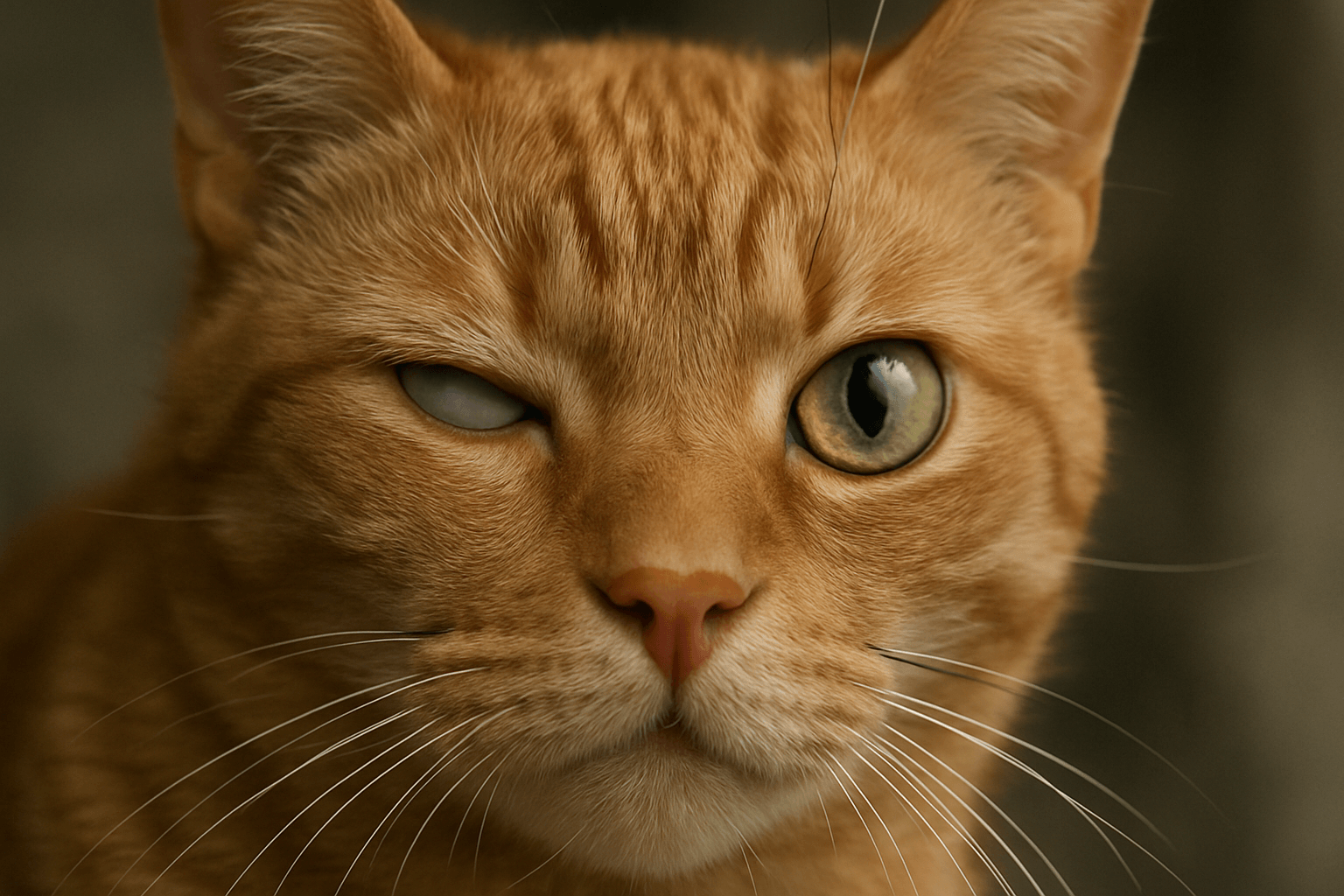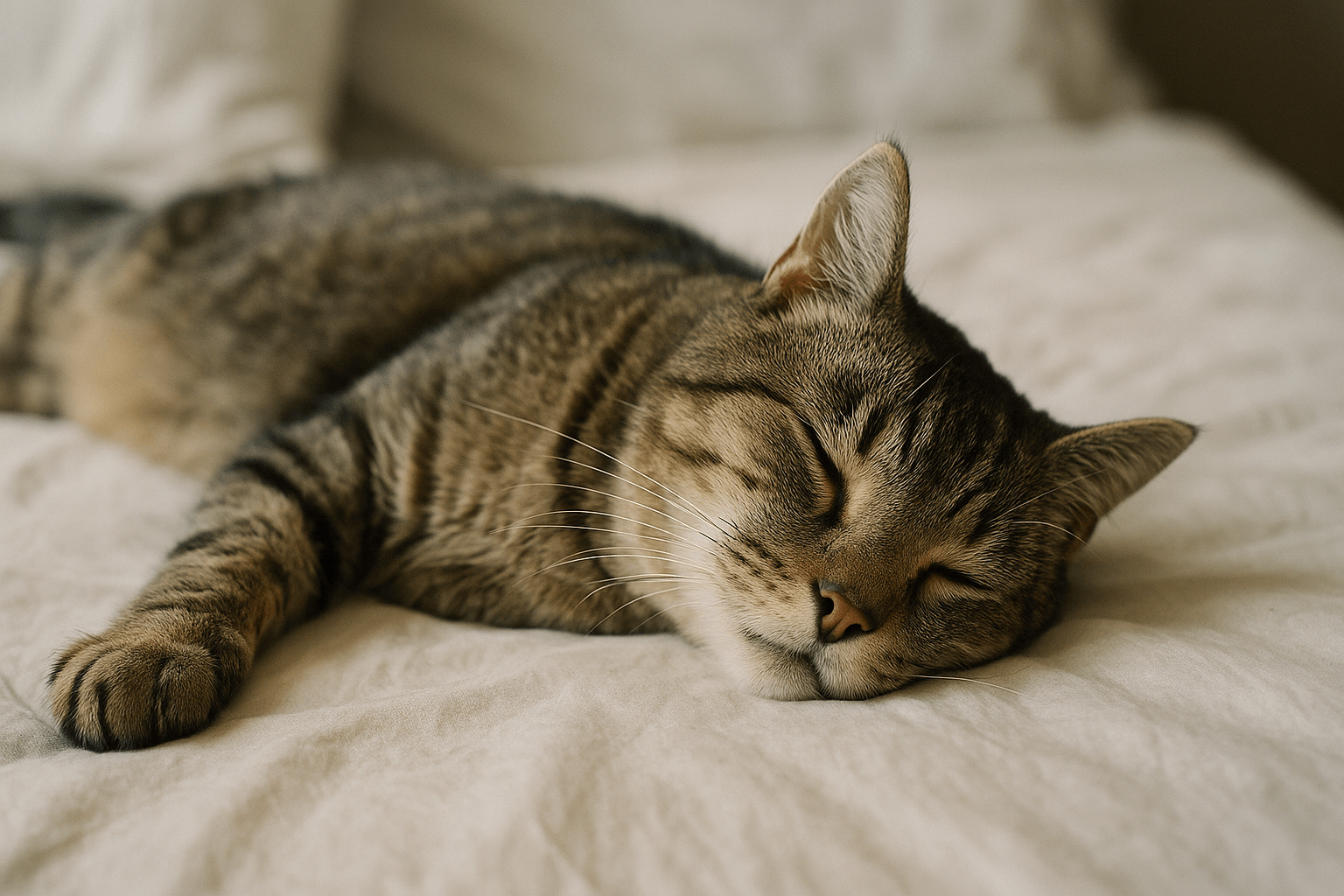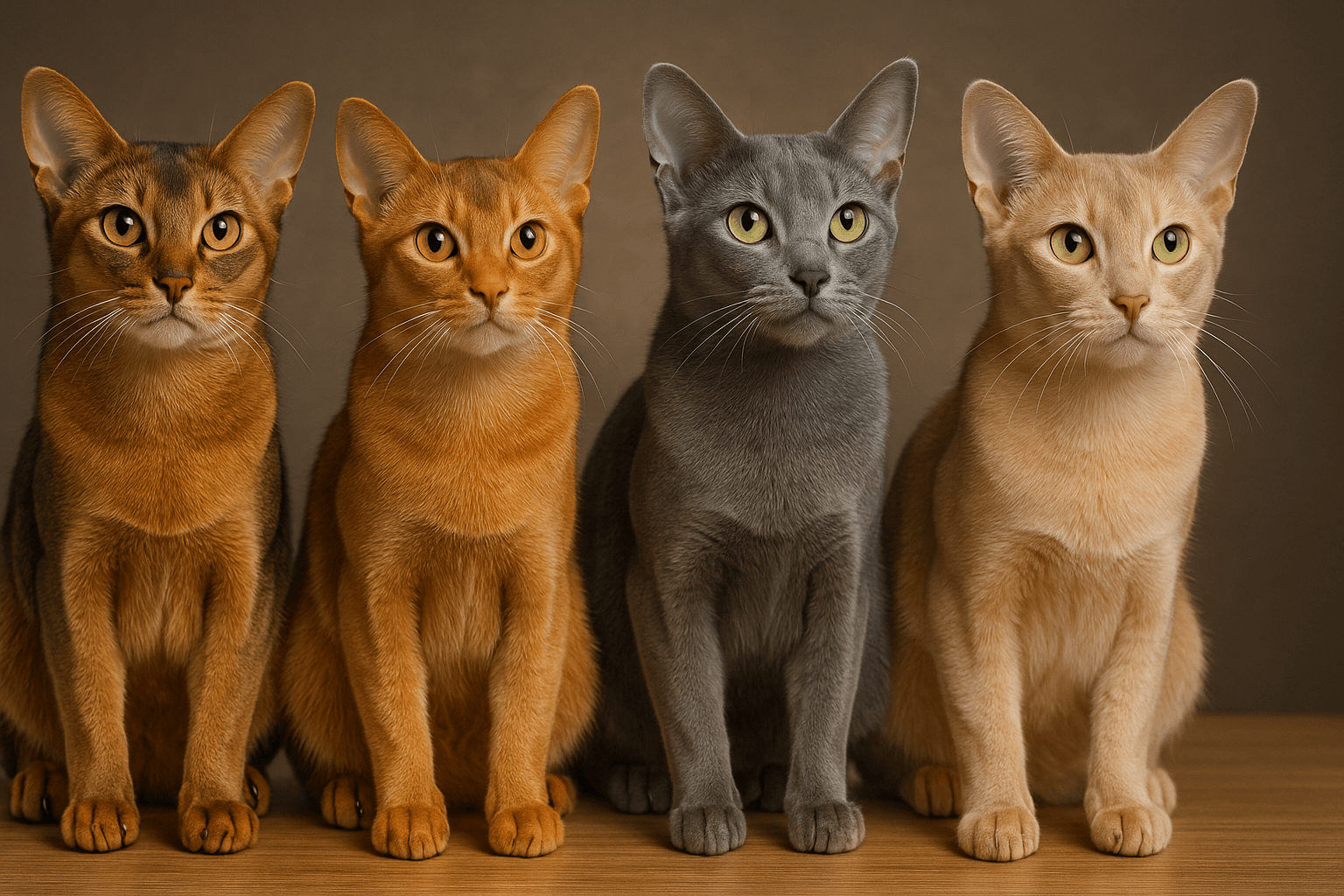Cat Anxiety Treatment: 7 Proven Ways to Calm Your Stressed Feline
Cats are masters of hiding their distress — but when anxiety takes hold, it shows in subtle ways: hiding more than usual, over-grooming, pacing, or even aggression. Cat anxiety isn’t just “being skittish.” It’s a real, physiological response to stress that can impact their health, behavior, and quality of life. Understanding the root causes and implementing effective cat anxiety treatment is not optional — it’s essential for every compassionate owner. This guide reveals the seven most powerful, vet-approved strategies to help your cat feel safe, calm, and truly at home.
The Hidden Signs of Cat Anxiety You Can’t Afford to Miss
Cat anxiety doesn’t always come with meows or visible panic. Often, it whispers — through behaviors that are easy to misinterpret as “bad habits.” Recognizing these signs early is the first step toward effective cat anxiety treatment.
Excessive Grooming:
Licking or biting fur until it thins or disappears — often on the belly or legs — is a self-soothing behavior triggered by stress.Hiding or Avoiding Interaction:
A once-affectionate cat who now hides under beds or avoids family members may be overwhelmed by environmental stressors.Litter Box Avoidance:
Urinating or defecating outside the box isn’t rebellion — it’s often a sign of anxiety, especially if the litter box location or cleanliness has changed.Destructive Behavior:
Scratching furniture, chewing wires, or knocking objects off shelves can be expressions of pent-up anxiety or boredom.Increased Vocalization:
Constant meowing, yowling, or crying — especially at night — may signal fear, confusion, or separation distress.
If you notice even one of these behaviors persisting for more than a few days, it’s time to address the underlying anxiety. Ignoring it won’t make it go away — it will only deepen.
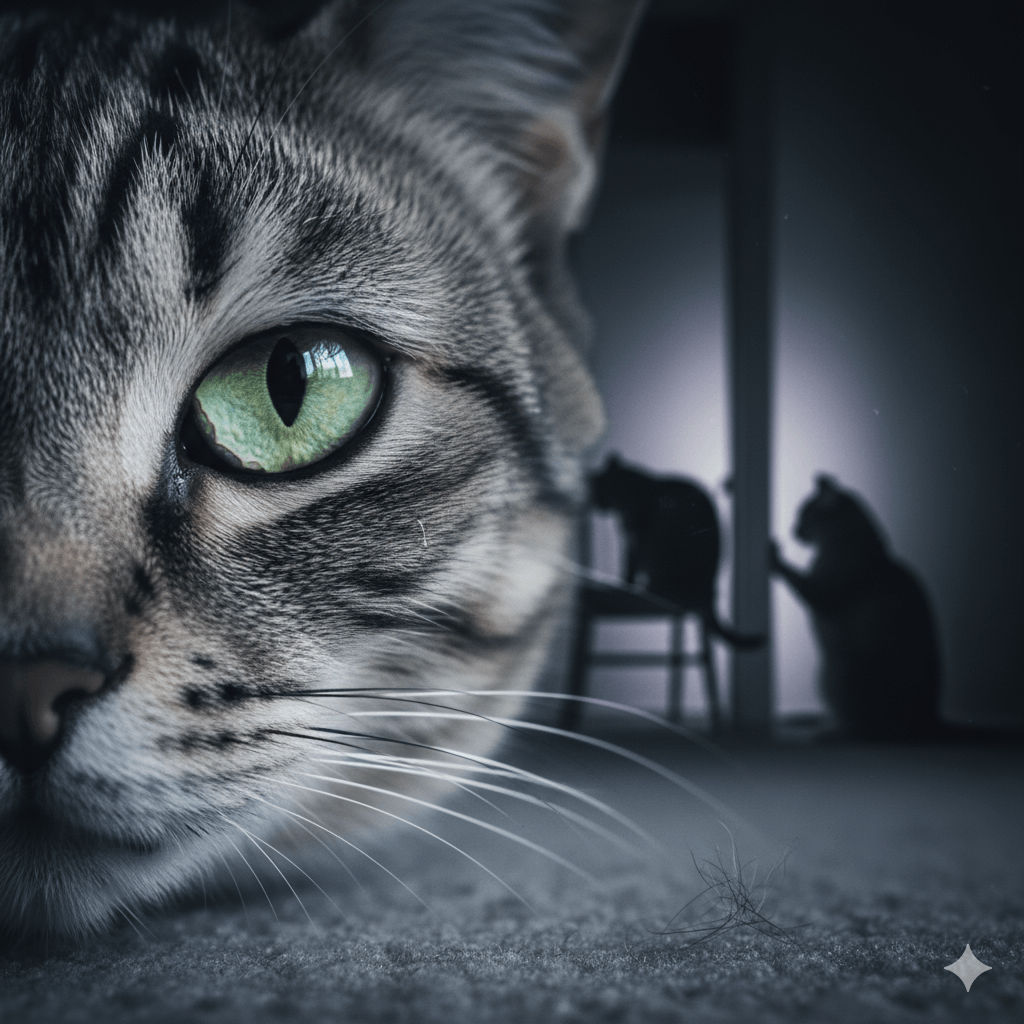
Root Causes of Cat Anxiety: What’s Really Triggering Your Cat’s Stress
Cats are sensitive creatures. What seems minor to us — a new rug, a loud vacuum, or a change in schedule — can feel like chaos to them. Understanding the triggers is key to effective cat anxiety treatment.
Environmental Changes:
Moving homes, rearranging furniture, or introducing new decor can disrupt a cat’s sense of safety and territorial control.New People or Pets:
The arrival of a baby, roommate, or another animal introduces unfamiliar scents, sounds, and routines that trigger territorial anxiety.Loud Noises:
Fireworks, thunderstorms, construction, or even high-pitched appliances can overload a cat’s acute hearing and nervous system.Separation Anxiety:
Cats form deep bonds. When left alone for long periods — especially after a change in routine — they can experience profound distress.Medical Issues:
Pain, thyroid imbalances, or cognitive decline in older cats can manifest as anxiety. Always rule out health problems first.
Anxiety isn’t “in your cat’s head” — it’s a biological response to perceived threats. Treating it requires identifying the source, not just masking the symptoms.
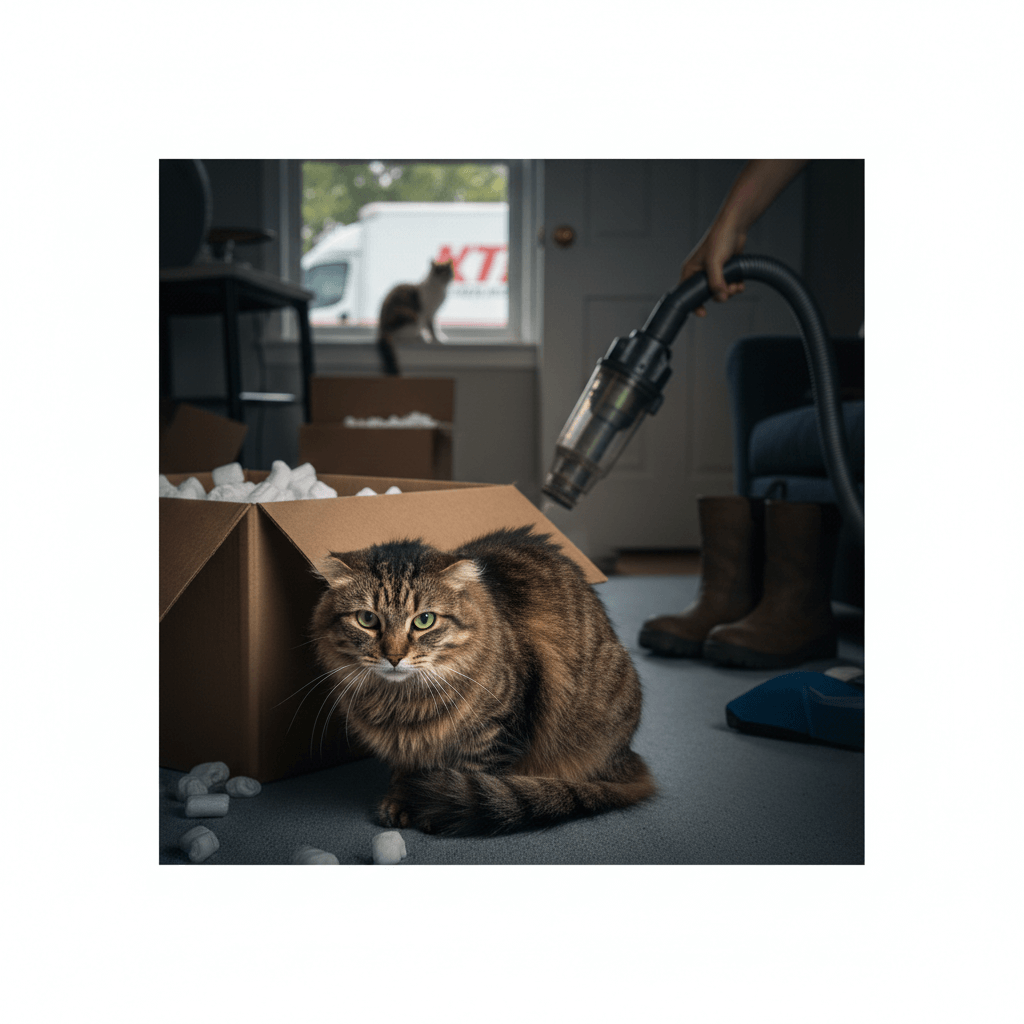
Check this guide 👉Cat Separation Anxiety Symptoms: Best 7 Expert Tips!
Check this guide 👉Understanding Cat Anti-Anxiety Medication: Best 7 Tips!
Check this guide 👉I Have Separation Anxiety from My Cat: Best 7 Tips!
| Natural & Behavioral Treatments | Medical & Professional Interventions |
|---|---|
| Pheromone diffusers (e.g., Feliway) to mimic calming facial scents | Prescription anti-anxiety medications like fluoxetine or clomipramine |
| Consistent daily routines for feeding, play, and sleep | Veterinary behaviorist consultation for tailored treatment plans |
| Safe spaces with hiding spots and elevated perches | Short-term sedatives for high-stress events (e.g., travel or vet visits) |
| Interactive toys and puzzle feeders for mental stimulation | Diagnosis and treatment of underlying medical conditions causing anxiety |
| Gradual desensitization to triggers using positive reinforcement | Regular follow-ups with a vet to monitor progress and adjust therapy |
7 Proven Cat Anxiety Treatment Strategies That Actually Work
When it comes to cat anxiety treatment, there’s no one-size-fits-all solution. But research and veterinary experience point to seven highly effective, non-invasive methods that restore calm and confidence.
Create a Safe Zone:
Designate a quiet room with your cat’s bed, litter box, food, water, and favorite toys. This becomes their sanctuary when the world feels overwhelming.Use Feliway Diffusers or Sprays:
Feliway mimics the natural facial pheromones cats release when feeling secure. Studies show it reduces spraying, hiding, and vocalization in over 70% of cases.Establish Predictable Routines:
Feed, play, and sleep at the same times daily. Cats thrive on rhythm — predictability reduces uncertainty and lowers cortisol levels.Engage in Interactive Play Daily:
Use wand toys for 10–15 minutes twice a day. Simulating the hunt releases endorphins, burns nervous energy, and strengthens your bond.Introduce Calming Supplements:
Natural options like L-theanine, tryptophan, or valerian root (vet-approved) can gently support nervous system balance without sedation.Provide Vertical Space and Hiding Spots:
Cat trees, window perches, and covered beds give your cat control over their environment — a powerful antidote to anxiety.Avoid Punishment and Forced Interaction:
Yelling, scolding, or forcing cuddles increases fear. Let your cat approach you on their terms — trust is rebuilt slowly, with patience.
These strategies work best when used together. One alone may help — but a layered approach transforms anxiety into peace.

The Power of Environmental Enrichment for Anxious Cats
A bored cat is an anxious cat. Enrichment isn’t just about toys — it’s about restoring your cat’s sense of agency, curiosity, and purpose.
Rotate Toys Weekly:
Keep things novel. Store toys out of sight and rotate them to reignite interest and mental stimulation.Install Window Perches:
Birds, squirrels, and passing cars provide hours of low-energy entertainment — a natural mood booster.Use Puzzle Feeders:
Turn mealtime into a mental game. Slow-feeders and treat balls engage your cat’s hunting instincts and reduce stress.Introduce Cat-Safe Plants:
Catnip, wheatgrass, and valerian root offer sensory stimulation and gentle calming effects.Play “Hide and Seek” Games:
Hide treats or toys around the house. Let your cat “hunt” — it’s instinctual, rewarding, and deeply soothing.
Environmental enrichment doesn’t require expense — just intention. A few thoughtful changes can transform your home into a calming haven.
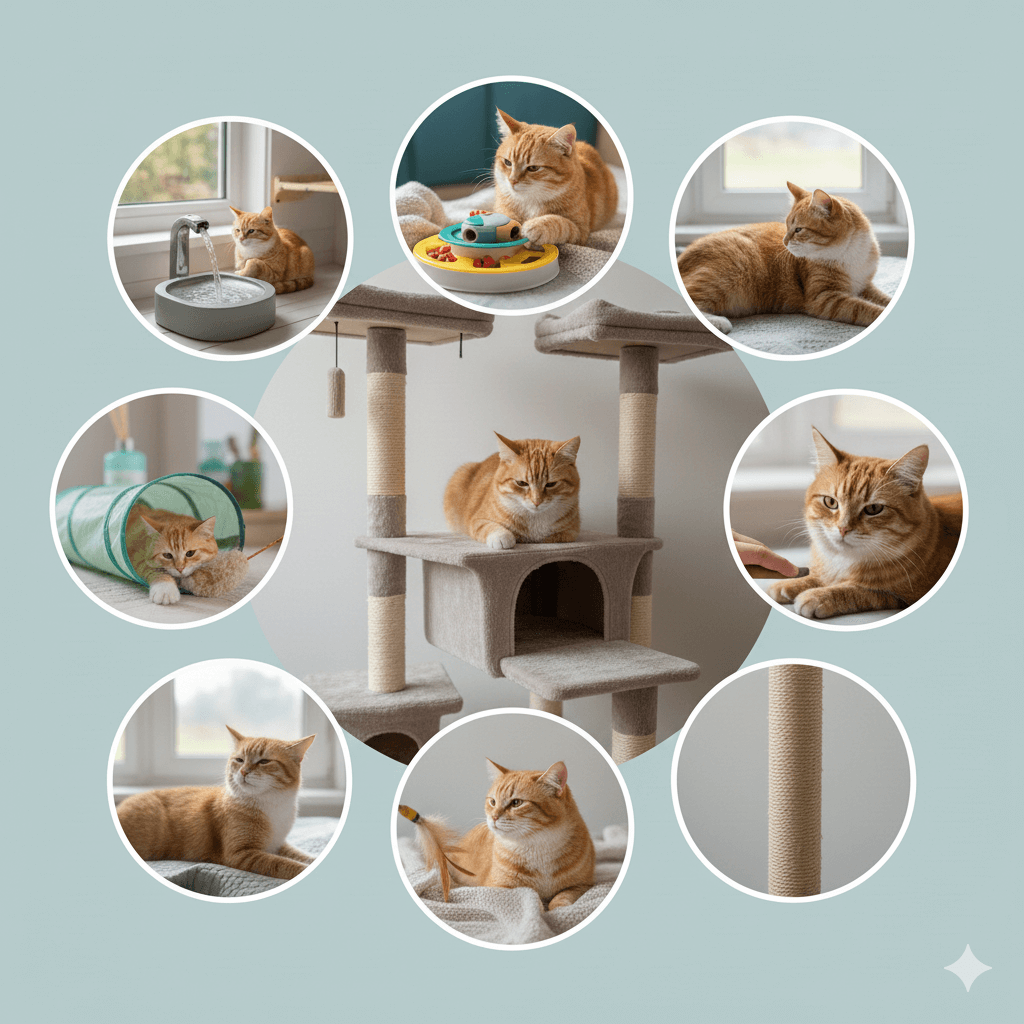
When to Consider Medication for Cat Anxiety
Not all anxiety can be resolved with toys and routines. In severe cases — especially with separation anxiety or trauma — medication may be necessary as part of a holistic cat anxiety treatment plan.
SSRIs and SNRIs:
Medications like fluoxetine (Prozac) or sertraline are sometimes prescribed for chronic anxiety and are safe when monitored by a vet.Benzodiazepines:
Short-term use (e.g., alprazolam) may help during acute stressors like thunderstorms or vet visits — never for daily long-term use.Pharmaceutical Pheromones:
Prescription-strength Feliway or other synthetic pheromone products can be more potent than over-the-counter versions.Always Rule Out Medical Causes First:
Hyperthyroidism, arthritis, or dental pain can mimic anxiety. Bloodwork and physical exams are essential before medication.Medication Is a Bridge, Not a Lifeline:
Drugs should be paired with behavioral therapy. The goal is to wean off medication as your cat learns to feel safe again.
Never self-prescribe. Always work with a veterinary behaviorist. Medication isn’t a failure — it’s a lifeline for cats in deep distress.
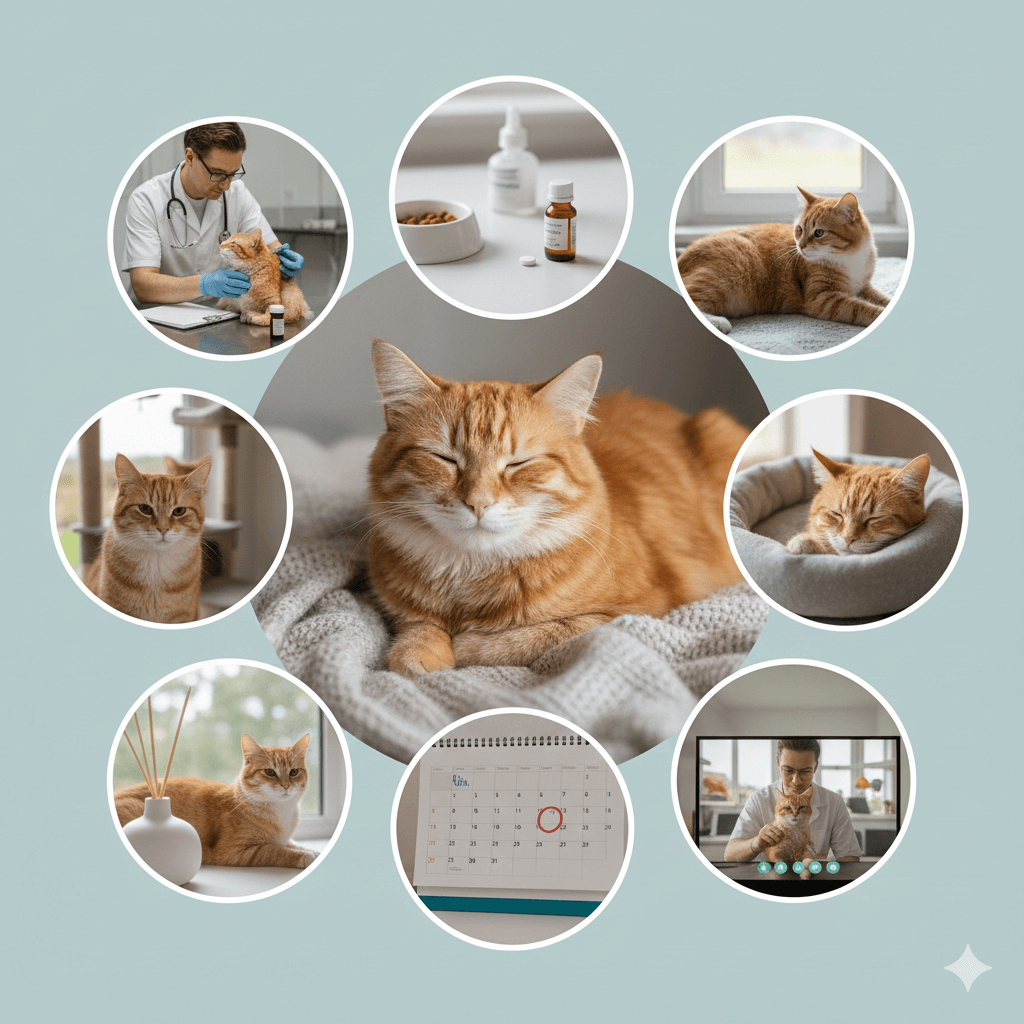
How to Build Trust with an Anxious Cat — Patience Is Everything
Rebuilding trust with an anxious cat takes time — sometimes weeks, sometimes months. But the bond you form is deeper than with any “easy” cat.
Let Them Initiate Contact:
Don’t reach for them. Sit quietly nearby and offer your hand palm-down. Let them sniff or rub against you on their terms.Speak Softly and Move Slowly:
Loud voices and sudden movements are threatening. Use a calm, low tone and move like a shadow — gentle and predictable.Respect Their Space:
If they retreat, don’t follow. Their safety comes first. Your presence alone, without pressure, builds subconscious security.Offer Treats Without Demanding Interaction:
Hand-feed small pieces during quiet moments. Associate you with comfort, not demands.Celebrate Tiny Wins:
A purr. A blink. A head bump. These are victories. Acknowledge them — your cat feels seen.
Trust isn’t earned through force. It’s earned through consistency, silence, and unwavering patience.
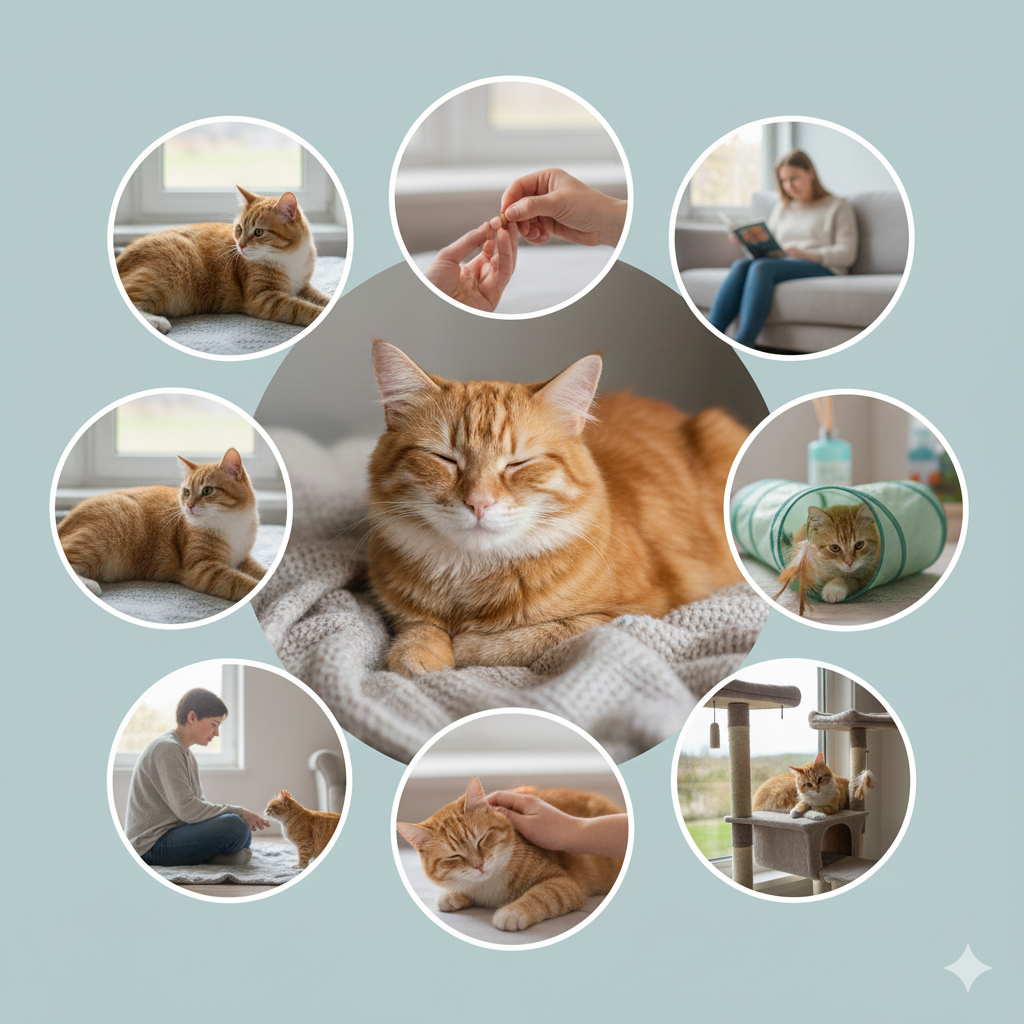
Frequently Asked Questions About Cat Anxiety Treatment
How do I know if my cat’s anxiety is serious enough for a vet?
If behaviors last more than two weeks, worsen over time, or include self-injury (like hair loss or sores), consult a vet immediately.
Can cats grow out of anxiety on their own?
Rarely. Anxiety tends to intensify without intervention. Early treatment prevents lifelong behavioral issues.
Are calming collars effective for cats?
Some cats tolerate them, but many find them irritating. Pheromone diffusers are generally more effective and safer.
Will getting another cat help my anxious cat?
Not usually. Most anxious cats are overwhelmed by new companions. Introductions require expert guidance — and often make things worse.
Can diet affect my cat’s anxiety?
Yes. High-carb, low-protein diets can impact mood. Look for high-meat, grain-free options with added tryptophan or omega-3s.
Embrace Calm: Your Cat Deserves Peace, Not Panic
Cat anxiety treatment isn’t about fixing a problem — it’s about restoring harmony. It’s about recognizing that behind every hidden cat, every over-groomed patch of fur, every trembling tail, is a soul longing for safety. You don’t need to be a behaviorist to help. You just need to pay attention. To slow down. To listen — not with your ears, but with your heart.
Your cat doesn’t ask for much. Just to feel secure. To be understood. To know that their world won’t suddenly change without warning.
Why Is My Cats Second Eyelid Showing? Best 7 Expert Tips! Understand causes, health signs, and how to respond when your cat’s third eyelid becomes visible.
How Do I Know If My Cat Died Peacefully? Best 7 Expert Tips! Discover the quiet signs of a peaceful feline passing and find comfort in their final moments.
Cat Allergy Eyes: Best 7 Expert Tips! Discover why your eyes react to cats and learn proven strategies for relief—without giving up your feline friend.
Why Do Abyssinian Cat Colors Matter? Best 7 Expert Tips! Discover the genetics, rare hues, and care secrets behind Abyssinian coat colors for a healthier, happier cat.

